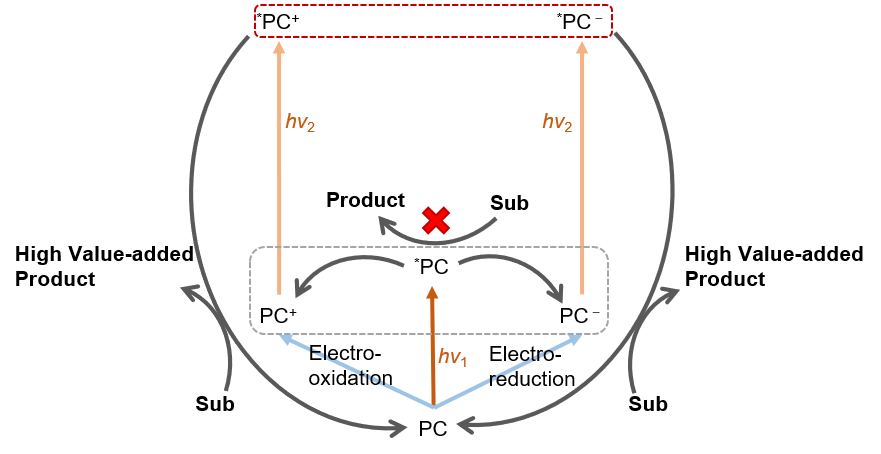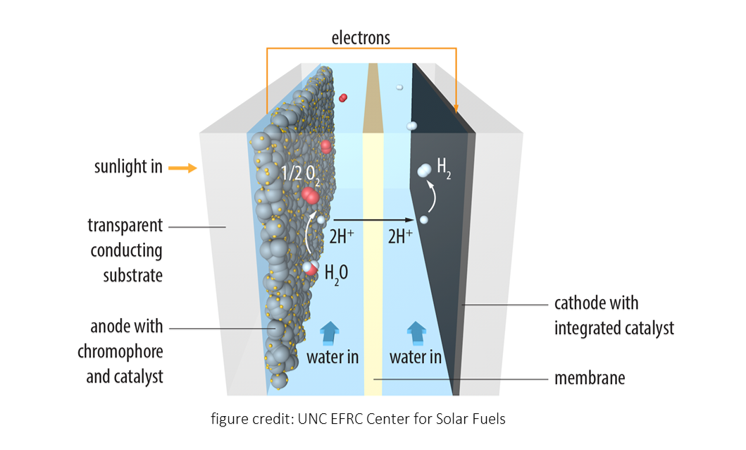Ongoing Research Projects
1. Consecutive Light Excitation Approach to Energy-Demanding Synthesis of Value-Added Chemicals
Inert chemical bonds such as C-H, C-Cl, N≡N, etc. require highly reducing or oxidizing reagents (E < -2 V or > 2 V vs. SCE) to initiate chemical transformations to value-added chemicals. Excited states of typical photocatalysts such as ruthenium or iridium based metal complexes are incapable of achieving such extreme redox potentials. Our research group set out to use small organic photocatalysts that could consecutively absorb multiple photons and reach super-photooxidants or reductants. Our current achievements include using N-phenylphenothiazine (PTH) photocatalyst to do one electron oxidation of chloride and activate C(sp3)-H bonds for the synthesis of functionalized alkanes; using hybrid structure of perylene diimide (PDI) with ZrO2 nanoparticles to activate aryl C-Cl bonds or CO2 reduction catalyst at low catalytic concentrations.

Selected Publications:
2) Zhao, Z.; Niu, F.; Li, P.; Wang, H.; Zhang, Z.; Meyer, G. J.*; Hu, K.*, Visible Light Generation of a Microsecond Long-Lived Potent Reducing Agent. J. Am. Chem. Soc. 2022, 144, 7043-7047.
3) Li, P.; Deetz, A. M.; Hu, J.; Meyer, G. J.*; Hu, K.*, Chloride Oxidation by One- or Two-Photon Excitation of N-Phenylphenothiazine. J. Am. Chem. Soc. 2022, 144, 17604-17610.
2. Photoelectrochemical Cells (PEC) for Artificial Photosynthesis (Liquid Sunlight)
The sun is the most abundant renewable energy upon which a sustainable society can be built. Currently, harvesting 1/7000 of the total solar energy reaching the surface of our earth will suffice the entire energy demand of our human society. Natural photosynthesis in which CO2, water, and sunlight are converted into carbohydrates and dioxygen gives us a perfect example to learn the trick of storing solar energy into high energy chemical bonds. Our research group set out to use visible light absorbing semiconductor based photoelectrodes for the construction of photoelectrochemical cells (PEC) to mimic natural photosynthesis. Our current efforts include using modified bismuth vanadate as the photoanode material for water, glycerol oxidation or organic C-H functionalization; using dye-sensitized photoelectrodes for the construction of tandem cells for total water splitting.

Selected Publications:
